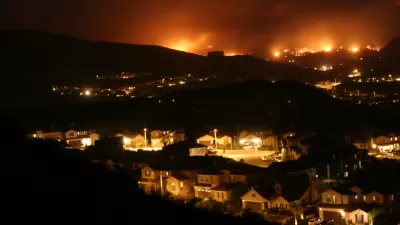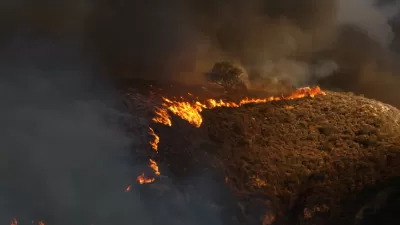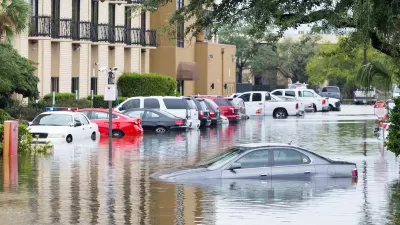Climate change is causing more destructive wildfires, prompting home insurers to reconsider coverage in the state.

More destructive wildfires bolstered by climate change are causing Texas insurers to take note, write Delger Erdenesanaa and Christopher Flavelle in the New York Times. “In most of Texas, wildfires happen in the summer. But across the Southern Plains, including the Texas Panhandle, fire risk is highest around March when temperatures warm, strong winds blow over the flat landscape and dry grass left from the previous growing season can easily catch fire.”
The Smokehouse Creek fire raging in the Panhandle region is now the largest in the state’s history, fueled by high temperatures, low humidity, and strong winds. “Temperatures in Texas have risen by 0.61 degrees Fahrenheit per decade since 1975, according to a 2021 report by the state climatologist’s office,” while relative humidity has decreased.
“Texas homeowners saw their insurance rates increase 53.6 percent between 2019 and 2023, according to data compiled by S&P Global Market Intelligence.” Some insurers have started leaving the state altogether, mirroring a similar situation in California.
FULL STORY: Climate Change Is Raising Texas’ Already High Wildfire Risks

Alabama: Trump Terminates Settlements for Black Communities Harmed By Raw Sewage
Trump deemed the landmark civil rights agreement “illegal DEI and environmental justice policy.”

Planetizen Federal Action Tracker
A weekly monitor of how Trump’s orders and actions are impacting planners and planning in America.

The 120 Year Old Tiny Home Villages That Sheltered San Francisco’s Earthquake Refugees
More than a century ago, San Francisco mobilized to house thousands of residents displaced by the 1906 earthquake. Could their strategy offer a model for the present?

High-Speed Rail Tracker
Smart Cities Dive follows high-speed rail developments around the country

Ken Jennings Launches Transit Web Series
The Jeopardy champ wants you to ride public transit.

BLM To Rescind Public Lands Rule
The change will downgrade conservation, once again putting federal land at risk for mining and other extractive uses.
Urban Design for Planners 1: Software Tools
This six-course series explores essential urban design concepts using open source software and equips planners with the tools they need to participate fully in the urban design process.
Planning for Universal Design
Learn the tools for implementing Universal Design in planning regulations.
Clanton & Associates, Inc.
Jessamine County Fiscal Court
Institute for Housing and Urban Development Studies (IHS)
City of Grandview
Harvard GSD Executive Education
Toledo-Lucas County Plan Commissions
Salt Lake City
NYU Wagner Graduate School of Public Service





























